- Unveiling the Secrets of Hand Analysis: The Role of Finger Length in Palmistry
Unlock the age-old mysteries hidden within the lines of your palm as we embark on a captivating journey into the world of palmistry. From decoding finger lengths to interpreting personality traits, uncover the fascinating connection between your fingers and your inner self. Palmistry, a practice dating back centuries, holds the key to understanding aspects of our lives that can help shape our future. In this comprehensive guide, we will delve deep into the role of finger length in palmistry and discover how it can reveal a plethora of intriguing secrets about our character, health, and much more. Join us as we navigate the intricate realms of hand analysis and unlock the hidden knowledge that lies within the lines of our hands.
Contents
- Understanding Palmistry
- Decoding Finger Lengths
- Interpreting Finger Length Meanings
- Cross-Comparisons and Finger Length Ratios
- The Influence of Finger Lengths on Personality Traits
- Identifying Health Traits through Finger Length Analysis
- Hand Dominance and Finger Length Contrasts
- Additional Palmistry Factors to Consider
- Conclusion
-
Frequently Asked Questions
- What is the history of palmistry?
- Can palmistry predict the future?
- Can finger length really reveal personality traits?
- What are the different finger lengths in palmistry?
- What is the significance of the thumb in palmistry?
- How does finger length differ between males and females?
- What can finger lengths reveal about a person’s health?
- How does the dominant hand affect finger length interpretations?
- Are there other factors to consider in palmistry beyond finger length?
- Can palmistry help in understanding love and relationships?
- References
Understanding Palmistry

Decipher the ancient art of palmistry and gain a deeper understanding of this mystical practice. Palmistry, also known as chiromancy, is the study of the lines, shapes, and markings on the palms of our hands. It is believed that each individual’s hand holds a unique map that can provide valuable insights into their personality, talents, and even the potential future that awaits them. By analyzing various hand features such as finger length, thumb shape, and the positioning of lines and mounts on the palm, experienced palmists can unveil remarkable details about a person’s life. Palmistry dates back centuries and has been practiced by renowned palmists throughout history, leaving behind a rich legacy of knowledge and expertise. Learn more about the fascinating history of this discipline and how it has evolved over time. Understanding the intricacies of palmistry can also shed light on the intricacies of hand dominance, offering insights into how our dominant hand can influence our traits and abilities. Discover the interconnectedness between palmistry and love relationships, as the lines on the hand can provide interpretations about one’s romantic life and emotional connections. Uncover the secrets of palmistry and embark on a journey of self-discovery and enlightenment.
What is Palmistry?
Palmistry, also known as chiromancy, is a fascinating ancient practice that involves interpreting the various lines, shapes, and markings on the palms of our hands. It is based on the belief that our hands hold valuable information about our character, potential future, and even our health. By studying the patterns on the palm, palmists aim to unlock the secrets hidden within and provide insights into different aspects of a person’s life.
The lines on the palm, such as the heart line, head line, and life line, are thought to provide clues about our emotional tendencies, mental capabilities, and vitality. The shape and length of our fingers, along with the positioning of mounts and other features on the palm, further contribute to the analysis. Palmistry is not a form of fortune-telling but rather a tool for self-discovery and understanding.
Throughout history, numerous cultures and civilizations have embraced palmistry and developed their own interpretations and systems. From ancient Indian palmistry (known as hast samudrik shastra) to Chinese palmistry (known as cheiromancy), each tradition has its unique approach to palm analysis. Today, palmistry continues to be practiced and studied by enthusiasts around the world, offering valuable insights into personality traits, potential career paths, and even health indicators.
Exploring the world of palmistry can provide a profound understanding of oneself and those around us. By tapping into the wisdom of palmistry, we gain a holistic perspective on our strengths, weaknesses, and potentials. Whether you are interested in understanding hand dominance and its significance or curious about how love relationships can be interpreted through palmistry, delving into this ancient practice can open up a whole new realm of self-discovery and personal growth.
The Importance of Hand Analysis
In the realm of palmistry, hand analysis holds significant importance as it offers a window into the depths of one’s character, talents, and potential. It allows individuals to gain a deeper understanding of themselves and make informed decisions in various aspects of life. Hand analysis can serve as a powerful tool for self-reflection, personal growth, and self-improvement.
Through hand analysis, one can unravel the unique patterns and configurations of lines, mounts, and creases on their palms. These patterns are believed to provide valuable insights into an individual’s personality traits, strengths, weaknesses, and life experiences. By understanding these aspects, individuals can gain self-awareness and utilize their strengths more effectively, while working on areas that may need improvement.
Hand analysis also plays a crucial role in guiding individuals towards fulfilling their life purpose. It can help uncover hidden talents, passions, and interests that may influence their career choices and overall life path. By recognizing these inclinations through hand analysis, individuals can align their actions and decisions with their true passions, leading to a more fulfilling and purposeful existence.
Hand analysis can offer guidance in relationships and personal interactions. By studying the lines and shapes of the hand, palmists can provide insights into an individual’s emotional nature, communication style, and compatibility with others. This knowledge can assist individuals in building stronger, more harmonious relationships, and making informed choices in matters of the heart.
Hand analysis holds immense significance as it empowers individuals to understand themselves better and make choices that are in alignment with their true nature. It serves as a valuable tool for personal development, self-exploration, and finding meaning in various aspects of life.
Decoding Finger Lengths

In the realm of palmistry, the length of our fingers holds intriguing significance and can offer valuable insights into our personalities and traits. Decoding finger lengths is an essential aspect of hand analysis. Long fingers typically indicate individuals who possess a meticulous, detail-oriented nature. They tend to excel in analytical thinking and have a natural inclination towards problem-solving. On the other hand, individuals with short fingers exude a practical and hands-on approach to life. They are often characterized by their ability to work efficiently and excel in physical tasks. For those with equal-length fingers, a sense of balance and harmony is prominent in their lives, enabling them to adapt well to various situations. However, it is not just finger length that plays a crucial role; the thumb factor is equally significant. A long thumb is associated with strong willpower and determination, while a short thumb signifies a more easy-going and adaptable nature. Understanding the intricacies of finger lengths and the role of the thumb allows us to decipher the unique characteristics that shape our individuality, paving the way for a deeper appreciation of ourselves and others.
Long Finger
- A long finger is characterized by a finger length that exceeds the average length in relation to the hand. This can be observed when the finger appears noticeably longer than the rest of the fingers or when it extends well beyond the middle joint of the ring finger.
- Personality Traits: Individuals with long fingers are often associated with qualities such as intelligence, analytical thinking, and a logical approach to problem-solving. They tend to excel in fields that require attention to detail, such as science, mathematics, and research.
- Creativity and Artistic Abilities: Contrary to the stereotype that only those with short fingers possess artistic talent, individuals with long fingers often possess a unique blend of creativity and analytical prowess. This combination allows them to excel in artistic endeavors that require both precision and imaginative thinking.
- Emotional Traits: People with long fingers are often emotionally reserved, maintaining a sense of control over their feelings. They may not easily display their emotions, preferring to process and rationalize their feelings internally. However, this emotional control can also lead to a level-headed approach in difficult situations.
- Health Indicators: In some cases, long fingers can be an indication of certain health conditions. For example, studies have suggested that men with long ring fingers (compared to their index fingers) may have a higher likelihood of developing prostate cancer. In females, long fingers have been associated with conditions like polycystic ovary syndrome and hormonal imbalances.
Short Finger
A short finger in palmistry can reveal intriguing aspects of an individual’s personality and characteristics. When the ring finger or the middle finger appears shorter than usual, it indicates certain traits that may manifest in different areas of life. Short ring finger: Individuals with a short ring finger tend to have strong assertiveness, self-confidence, and a natural ability to lead. They are often charismatic and excel in positions of authority or leadership roles. However, they may also be prone to being impulsive or quick to anger. Short middle finger: Those with a short middle finger are often highly ambitious and driven. They have a strong desire to succeed in their chosen endeavors and are willing to put in the necessary effort to achieve their goals. They possess a keen analytical mind and tend to excel in professions that require problem-solving or critical thinking skills. Despite their ambition, they may also be prone to feelings of self-doubt and may need validation and recognition from others. Understanding the significance of a short finger in palmistry can provide valuable insights into an individual’s personality traits and help guide their personal and professional development.
Equal Length Fingers
When all the fingers on a person’s hand are of equal length, it signifies a sense of balance and harmony in their personality. Individuals with equal length fingers are known for their ability to see things from multiple perspectives, fostering a fair and unbiased approach to decision-making. They possess a well-rounded nature and are often excellent mediators, capable of resolving conflicts and finding common ground. People with equal length fingers tend to have a harmonious blend of analytical thinking and emotional intelligence, allowing them to navigate complex situations with ease. This balanced nature also extends to their relationships, as they prioritize equality and mutual understanding. They are reliable and dependable, making them trustworthy partners, friends, and colleagues. In terms of career, individuals with equal length fingers excel in professions that require diplomacy, such as law, counseling, or diplomacy itself. Their impartiality and ability to weigh different perspectives make them natural problem solvers and bridge builders. Having equal length fingers is seen as a positive sign in palmistry, indicating a well-rounded and fair-minded individual with a natural talent for maintaining harmony in various aspects of life.
The Thumb Factor
The thumb plays a significant role in palmistry, as it is considered to be the most important finger in hand analysis. It represents willpower, logic, and our ability to make decisions. By observing the length, flexibility, and shape of the thumb, palmists can gain valuable insights into a person’s character and psychological traits.
Thumb Length:
The length of the thumb is indicative of a person’s willpower and determination. A long thumb signifies strong leadership qualities, ambition, and a decisive nature. These individuals are often confident, assertive, and have the ability to make tough decisions. On the other hand, a short thumb suggests a more cautious and reserved personality, someone who prefers to assess situations carefully before taking action.
Thumb Flexibility:
The flexibility of the thumb indicates adaptability and open-mindedness. A flexible thumb suggests a person who is willing to embrace change, explore new ideas, and adapt to different situations. These individuals are often creative, innovative, and have a natural curiosity about the world around them. Conversely, a stiff thumb suggests a more rigid and traditional mindset, someone who may find it challenging to adjust to new circumstances.
Thumb Shape:
The shape of the thumb can provide further insights into a person’s character. A straight thumb suggests practicality, a logical approach, and a focus on facts and figures. These individuals are often grounded, reliable, and excel in roles that require attention to detail. A curved or conical thumb, on the other hand, indicates a more intuitive and imaginative nature. Such individuals may have a flair for creativity, possess strong intuition, and excel in artistic pursuits.
In palmistry, the thumb acts as a key that unlocks a treasure trove of information about a person’s willpower, adaptability, and unique personality traits. By analyzing the thumb factor, palmists can help individuals gain a deeper understanding of their strengths, weaknesses, and potential areas of personal growth.
Interpreting Finger Length Meanings
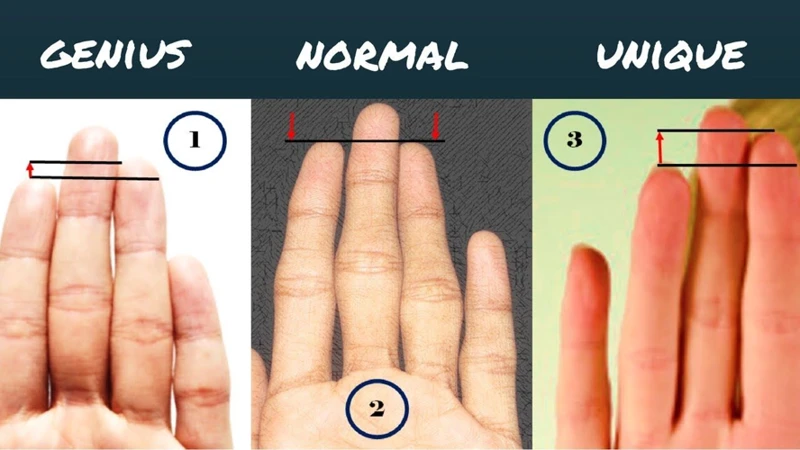
Delve into the intriguing world of finger length meanings and unravel the secrets they hold about our personality traits. Each finger on our hand represents different aspects of our character and understanding their significance can provide valuable insights. The index finger, also known as the pointer finger, is associated with leadership qualities and ambition. It symbolizes confidence, authority, and a desire for success. The middle finger represents balance and responsibility, signifying practicality and a grounded nature. It is also linked to one’s ability to communicate effectively. The ring finger is commonly associated with love, relationships, and creativity. It symbolizes emotional depth and artistic abilities. Finally, the pinky finger, also known as the little finger, is connected to communication skills, intelligence, and intuition. Analyzing the lengths and proportions of these fingers can provide further insights into a person’s personality traits and potential. Unlock the meanings behind each finger length and discover the hidden depths of your character.
Index Finger
The in palmistry holds significance as it represents power, authority, and ambition. Also known as the Jupiter finger, it is associated with leadership qualities and the drive for success. Individuals with a long and prominent index finger are often assertive, confident, and have a natural ability to take charge. They possess strong leadership skills and are usually goal-oriented, striving for accomplishments in both personal and professional endeavors. On the other hand, individuals with a shorter index finger may exhibit a more cautious approach and prefer to work in a supportive role rather than taking the lead. The length of the index finger in comparison to other fingers also plays a crucial role in finger length interpretation. For example, if the index finger is noticeably longer than the ring finger, it may indicate a strong desire for power and recognition. Conversely, if the index finger is shorter than the ring finger, it may suggest a more nurturing and supportive nature. As you explore the world of palmistry, remember that the index finger is just one piece of the intricate puzzle that can provide valuable insights into a person’s character and potential.+
Middle Finger
Ring Finger
The is a significant aspect of hand analysis in palmistry. Also known as the third finger or the Apollo finger, it holds valuable clues about various aspects of a person’s life. The length of the ring finger in relation to the other fingers can offer insights into their assertiveness, creativity, and emotional nature. A longer ring finger suggests qualities such as charisma, confidence, and a strong desire for recognition. People with a longer ring finger are often natural-born leaders and have a knack for taking charge in various situations. On the other hand, a shorter ring finger may indicate a more reserved and introverted personality. These individuals tend to be more cautious and prefer to work behind the scenes rather than seek the limelight. It is important to note that the length of the ring finger can differ between individuals, and the significance lies in its ratio with other fingers, especially the index finger. The alignment and positioning of the ring finger’s lines and mounts can further enhance the interpretations of its characteristics. Examining the ring finger in palmistry provides a glimpse into one’s confidence levels, creativity, and leadership tendencies, offering valuable insights into their overall personality and potential paths in life.
Pinky Finger
The pinky finger, also known as the little finger or Mercury finger, is the smallest finger on the hand. While it may be the smallest digit, the pinky finger holds significant symbolism in palmistry. This finger is associated with communication, expression, and intelligence. The length and shape of the pinky finger can reveal valuable insights about a person’s personality traits and abilities.
- Short Pinky Finger: A short pinky finger suggests that the individual may have difficulty expressing themselves verbally. They may struggle to communicate their thoughts and ideas effectively. Individuals with a short pinky finger tend to be reserved and introspective. They value their privacy and prefer to keep their thoughts and emotions to themselves.
- Long Pinky Finger: A long pinky finger indicates strong communication skills and eloquence. Individuals with a long pinky finger possess the gift of gab and can effortlessly articulate their thoughts. They have a natural charm that allows them to connect with others easily. These individuals are often persuasive and excel in fields that require effective communication, such as sales, teaching, or public speaking.
- Crooked Pinky Finger: If the pinky finger appears crooked or bent, it may indicate an unconventional or unique approach to communication. These individuals tend to think outside the box and have creative ways of expressing themselves. They may possess a non-traditional perspective and thrive in innovative and artistic endeavors.
- Straight Pinky Finger: A straight pinky finger suggests practicality and a logical mindset. Individuals with a straight pinky finger have a systematic approach to communication and prefer clear and concise language. They excel in fields that require attention to detail, such as research, analysis, or accounting.
By examining the pinky finger, palmists can gain valuable insights into an individual’s communication style, intellectual capabilities, and overall personality traits. Whether it is the length, shape, or any unique characteristics, the pinky finger plays a pivotal role in decoding the mysteries of the hand and providing a deeper understanding of ourselves.
Cross-Comparisons and Finger Length Ratios
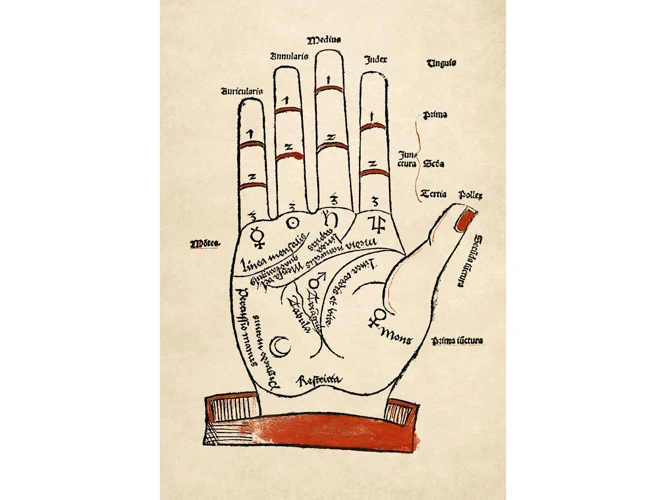
Dive deeper into the intricate art of palmistry by exploring the concept of cross-comparisons and finger length ratios. When examining the hand, palmists not only consider the individual lengths of each finger but also compare them to each other to reveal additional insights. Finger length ratios can provide valuable information about a person’s traits and tendencies. In males, a longer ring finger compared to the index finger may indicate higher levels of testosterone, while in females, a shorter ring finger compared to the index finger may suggest the same. These variations in length ratios can be linked to certain personality traits and even physical characteristics. Understanding and interpreting finger length ratios can add another layer of depth to the practice of palmistry and offer a more comprehensive analysis of an individual’s hand. Unlock the secrets hidden within the proportions of your fingers and unravel the nuances of your personality and potential.
Finger Length Ratios in Males
Finger Length Ratios in Females
The Influence of Finger Lengths on Personality Traits
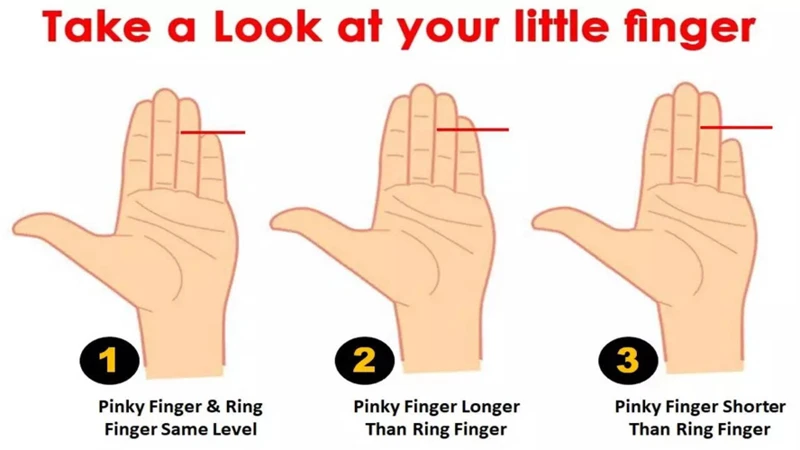
Discover the intriguing correlation between finger lengths and personality traits, as palmistry unveils yet another layer of insight into our individuality. The length of our fingers, particularly the index finger, middle finger, ring finger, and pinky finger, can offer valuable clues about our inherent tendencies and characteristics. Leadership skills and career aptitude can be indicated by the length of the ring finger, while the index finger is associated with intellectual curiosity and analytical thinking. The middle finger holds clues about our emotional temperament and relationship dynamics, while the pinky finger can provide insights into creativity and artistic abilities. Through finger length analysis, we can gain a deeper understanding of ourselves and use this self-awareness to navigate our personal and professional lives with greater insight and clarity.
Leadership Skills and Career Aptitude
When it comes to leadership skills and career aptitude, the length of your fingers can offer intriguing insights. The index finger, also known as the Jupiter finger, is associated with leadership qualities and ambition. An index finger that is longer than the ring finger indicates strong leadership potential and the ability to take charge. Individuals with this finger length are often driven, confident, and assertive in their career pursuits. On the other hand, a shorter index finger compared to the ring finger suggests a more collaborative and cooperative approach to leadership. These individuals excel in team settings and are skilled at fostering harmony among team members.
The ratio between the index finger and the ring finger, known as the 2D:4D ratio, has been linked to career aptitude. A lower ratio, where the index finger is shorter or equal to the ring finger, is associated with enhanced mathematical and analytical abilities, making it a favorable trait for careers in fields such as finance, engineering, and research. Conversely, a higher ratio, with a longer index finger compared to the ring finger, is often linked to superior verbal and communication skills, which can be advantageous for careers in sales, marketing, and public relations.
Understanding the correlation between finger length and leadership skills can help individuals gain valuable insights into their career potential and make informed decisions regarding their professional aspirations. Whether you possess the traits of a natural-born leader or thrive in collaborative environments, the length of your fingers can serve as a guiding compass on your vocational journey.
Emotional Temperament and Relationship Dynamics
Understanding the emotional temperament and relationship dynamics revealed through finger length in palmistry can provide valuable insights into an individual’s love life and compatibility with others. The length of the ring finger and index finger in relation to each other can indicate the balance between assertiveness and sensitivity in relationships. When the ring finger is longer than the index finger, it suggests a more assertive and dominant nature, while a longer index finger signifies a more nurturing and empathetic personality. This contrast in finger lengths can create a dynamic within relationships, with the potential for power struggles or a harmonious balance of power. Additionally, the length of the pinky finger can signify how expressive and open an individual is with their emotions. A longer pinky finger suggests a more emotionally expressive nature, while a shorter pinky finger may indicate a tendency to keep emotions more guarded. These subtle variations in finger length can greatly influence how individuals engage in romantic relationships and navigate emotional connections. It is important to note that palmistry offers a glimpse into potential relationship tendencies and dynamics, but it is not a definitive predictor of compatibility or success in love. Learn more about the connection between palmistry and love relationships.
Creativity and Artistic Abilities
- Creativity and artistic abilities can be revealed through finger length analysis in palmistry.
- The Ring Finger: The length of the ring finger can provide insights into an individual’s creative talents. If the ring finger is longer than the index finger, it is believed to indicate enhanced artistic abilities. People with longer ring fingers often possess a natural inclination towards creativity, whether it be in areas such as painting, music, writing, or performing arts.
- The Thumb: The flexibility and shape of the thumb also play a role in determining one’s artistic prowess. A flexible and long thumb is associated with artistic individuals who possess a great sense of imagination and are adept at expressing themselves through various forms of art. On the other hand, a short and rigid thumb may suggest limited creative abilities.
- Hand Shape: The overall shape of the hand can also provide indications of creative potential. A long and narrow hand with slender fingers is often associated with artistic and creative capabilities. This hand shape is often found in individuals who have a keen eye for aesthetics and possess a natural flair for artistic expression.
- Palm Lines: The presence of certain palm lines, such as the Apollo line or the Sun line, can further validate an individual’s artistic inclinations. These lines are believed to signify creativity, inspiration, and a genuine passion for the arts.
Intellectual Curiosity and Analytical Thinking
Dive into the fascinating realm of palmistry to explore the intriguing connection between finger length and intellectual curiosity and analytical thinking. The length of the index finger is often associated with one’s level of inquisitiveness and thirst for knowledge. A longer index finger indicates a natural tendency towards curiosity and a strong desire to explore and learn new things. Individuals with this finger length often possess a keen sense of observation, critical thinking skills, and a natural ability to analyze complex information. Their analytical minds enable them to approach problems from multiple angles, making them excellent problem solvers.
On the other hand, a shorter index finger suggests a more practical and hands-on approach to learning. While these individuals may not have the same level of intellectual curiosity as those with longer index fingers, they excel in applying their existing knowledge and skills to real-life situations. Their analytical thinking is focused on practical problem-solving rather than abstract concepts.
It’s important to note that finger length is just one aspect of determining intellectual curiosity and analytical thinking. Other factors such as the shape of the fingertips, the presence of certain lines on the palm, and the overall hand shape can also influence these traits. A comprehensive analysis of the hand is necessary to gain a deeper understanding of an individual’s intellectual abilities and analytical thinking skills. Unlock the secrets hidden within the lines of your palm and discover how your finger length may be a window into your intellectual curiosity and analytical thinking.
Identifying Health Traits through Finger Length Analysis
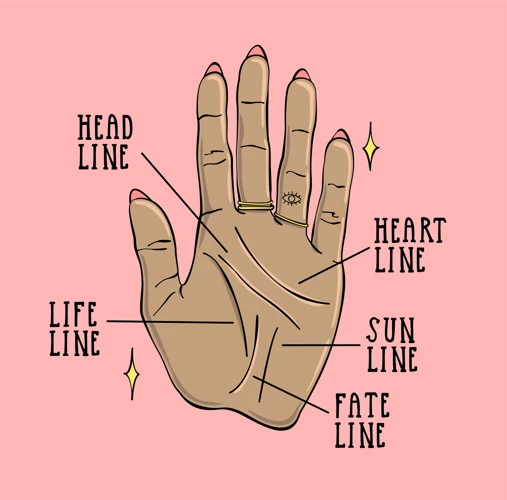
Explore the fascinating field of finger length analysis in palmistry and its potential to reveal important health traits. The length of our fingers can provide valuable insights into our overall well-being and various aspects of our physical health. By examining the ratios between different finger lengths, palmists can uncover significant indicators related to hormonal profiles, fertility, cardiovascular health, longevity, neurological conditions, and cognitive abilities. For example, research suggests that individuals with a longer ring finger compared to their index finger may have a higher risk of developing certain hormone-related conditions, such as polycystic ovary syndrome (PCOS) in females or prostate cancer in males. Additionally, the length of the ring finger has been associated with cardiovascular health, as a longer ring finger has been linked to a lower risk of heart disease. Understanding these unique connections between finger length and health traits can empower individuals to take proactive steps towards maintaining their well-being and seeking proper medical care. Dive into the realm of finger length analysis and unlock a deeper understanding of your health and potential vulnerabilities.
Hormonal Profile and Fertility
When it comes to palmistry, finger length can provide insights into a person’s hormonal profile and fertility. The ratio between the index finger (2D) and the ring finger (4D) is known as the digit ratio, and it has been linked to prenatal exposure to testosterone and estrogen. Research has suggested that individuals with a longer ring finger compared to their index finger may have been exposed to higher levels of testosterone in the womb, while those with a longer index finger may have been exposed to higher levels of estrogen.
For females, a lower digit ratio (longer ring finger) has been associated with higher fertility and a greater likelihood of having multiple children. This may be due to the influence of prenatal testosterone exposure, which can impact reproductive health. On the other hand, a higher digit ratio (longer index finger) in females has been linked to better verbal and communication skills, as well as a reduced risk of certain health conditions such as breast cancer and osteoporosis.
In males, a lower digit ratio (longer ring finger) has been associated with higher testosterone levels and a higher likelihood of engaging in competitive and risk-taking behaviors. These individuals may exhibit dominant and assertive traits, which can be advantageous in certain career paths. However, a higher digit ratio (longer index finger) in males has been linked to higher intelligence, improved math and spatial abilities, and a reduced risk of prostate cancer.
It is important to note that palmistry serves as a complementary tool for understanding aspects of an individual’s life and should not be used as a definitive measure of fertility or hormone levels. Other factors such as genetics, environment, and lifestyle choices also play a significant role in these aspects.
Cardiovascular Health and Longevity
When it comes to finger length analysis, certain patterns and ratios can provide insights into an individual’s cardiovascular health and longevity. Research has shown that individuals with a shorter ring finger compared to their index finger may have a higher risk of developing cardiovascular conditions such as heart disease, high blood pressure, and stroke. This is due to the potential link between finger length ratios and hormone exposure in the womb. It is believed that exposure to higher levels of testosterone during fetal development leads to a longer ring finger, while a shorter ring finger may indicate lower testosterone levels and higher estrogen exposure. These hormonal imbalances could potentially impact cardiovascular health in adulthood. However, it’s important to note that finger length ratios are just one factor to consider, and a comprehensive assessment of other health markers and risk factors is necessary for an accurate evaluation. Consulting with a healthcare professional is crucial for a comprehensive understanding of one’s cardiovascular health and longevity prospects.
Neurological Indicators and Cognitive Abilities
Our fingers not only provide insights into our personality traits but also offer clues about our neurological indicators and cognitive abilities. Through finger length analysis in palmistry, we can gain a deeper understanding of how our brain functions and our potential cognitive strengths.
Neurological indicators can be observed by comparing the lengths of different fingers. For instance, individuals with a short ring finger compared to their index finger may have an increased risk of developing certain neurological conditions such as Parkinson’s disease. On the other hand, a long ring finger relative to the index finger may indicate a lower risk of such conditions.
In addition to neurological indicators, finger length in palmistry can also provide insights into our cognitive abilities. Studies suggest that individuals with longer ring fingers tend to have stronger spatial awareness and problem-solving skills. They might excel in fields such as mathematics, architecture, or engineering. On the contrary, those with a longer index finger may display exceptional verbal skills and have a natural inclination towards fields like writing, public speaking, or language-related professions.
The ratio between the index finger and the ring finger, known as the 2D:4D ratio, has been linked to various cognitive abilities. A lower ratio (shorter ring finger compared to the index finger) has been associated with enhanced mathematical and analytical capabilities. Conversely, a higher ratio (longer ring finger relative to the index finger) may indicate enhanced verbal and creative abilities.
It is important to note that finger length analysis in palmistry is not a definitive diagnostic tool for neurological conditions or cognitive abilities. Rather, it provides valuable insights and can serve as a starting point for further exploration and understanding of our brain’s potential.
By examining the neurological indicators and cognitive abilities through finger length analysis, palmistry offers a unique perspective into the intricate connections between the structure of our hands and the functioning of our mind. It serves as a fascinating tool for self-reflection and understanding the complex interplay between our brain and our unique set of cognitive abilities.
Hand Dominance and Finger Length Contrasts
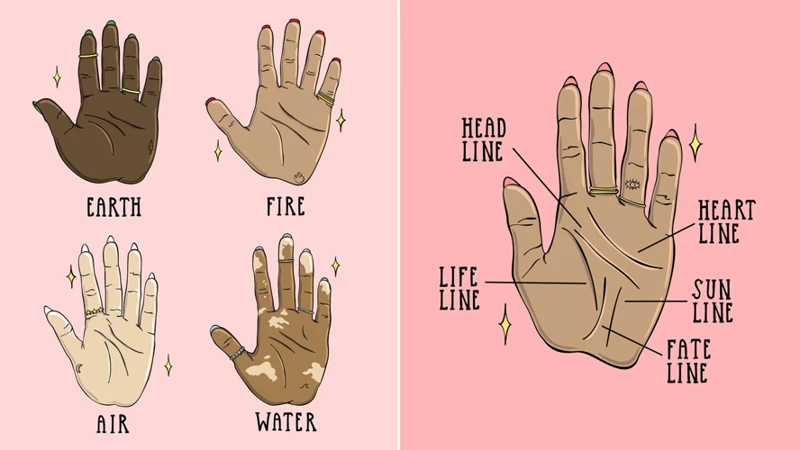
Explore the fascinating relationship between hand dominance and finger length contrasts, as we delve into the depths of palmistry. Hand dominance refers to the preference we have for using one hand over the other, whether it be the right hand or the left hand. In palmistry, hand dominance plays a significant role in interpreting the characteristics and traits of an individual. The length of the fingers on our dominant hand compared to our non-dominant hand can provide valuable insights into our personality and abilities. It is believed that individuals with a longer ring finger on their dominant hand tend to possess assertiveness, confidence, and strong leadership skills. On the other hand (pun intended), those with a shorter ring finger on their dominant hand may exhibit qualities such as creativity, sensitivity, and a more nurturing nature. Discover the intriguing connection between hand dominance and finger length contrasts, and how they can shape various aspects of our lives, from career choices to relationship dynamics. Unravel the mysteries that lie within the palms of your hands and gain a deeper understanding of yourself through the art of palmistry.
Right-Handedness and Left-Handedness
Right-handedness and left-handedness play a significant role in palmistry and can provide valuable insights into a person’s character and traits. The dominant hand, which is typically the hand used most frequently for tasks, holds important clues about an individual’s personality. For right-handed individuals, the right hand is considered the dominant hand. In palmistry, the dominant hand represents the conscious mind, logic, and practicality. It reflects the traits and qualities that are outwardly expressed to the world. On the other hand, left-handed individuals have their dominant hand as the left hand. The left hand in palmistry symbolizes the subconscious mind, intuition, and creativity. It represents a person’s hidden potential and innate talents.
When analyzing the hands, palmists often compare the two hands to gain a deeper understanding of an individual’s personality. In right-handed people, the right hand is typically the more active hand, reflecting their conscious choices and actions. The left hand, being the non-dominant hand, may indicate the person’s potential, hidden talents, and subconscious desires.
Conversely, in left-handed individuals, the left hand is the more active and dominant hand. It represents their conscious choices and actions. The right hand, serving as the non-dominant hand, can provide insights into their hidden potential, subconscious desires, and innate abilities.
While the dominant hand holds significant significance, it doesn’t mean that the non-dominant hand is irrelevant. Both hands work together to create a complete picture of an individual’s personality. The contrasting characteristics between the dominant and non-dominant hand provide a comprehensive understanding of their strengths, weaknesses, and unique qualities.
In palmistry, the dominance of one hand over the other can influence the interpretation of other hand features, such as finger lengths, lines, and mounts. It is essential to consider hand dominance, along with other palmistry factors, to obtain a more accurate and insightful analysis of an individual’s personality and traits.
Asymmetry and Its Interpretations
Asymmetry in palmistry refers to the differences or imbalances observed between the left and right hands. Each hand is believed to represent different aspects of our lives, with the left hand symbolizing our potential and natural talents, while the right hand represents our actions and how we have developed over time. When it comes to asymmetry, palmists carefully examine the variations in finger lengths, finger positioning, and the presence of different lines and mounts on each hand. These differences can offer valuable insights into our experiences, strengths, and challenges.
Interpreting the asymmetry in palmistry requires a holistic approach. If the left hand is noticeably different from the right hand, it might indicate an individual’s potential not fully realized or untapped talents waiting to be explored. On the other hand, if the right hand is more significant or exhibits more pronounced features than the left hand, it suggests personal development and the impact of life experiences shaping one’s character.
Additionally, the interpretation of asymmetry can be influenced by the dominant hand. For example, if someone is right-handed and their right hand is more dominant in terms of size and features, it can indicate a proactive and assertive nature in their actions. Conversely, if the dominant right hand appears less pronounced, it might signify a more reflective and introspective approach to decision-making and action.
It’s important to note that asymmetry in palmistry is common and rarely indicates a negative trait or outcome. Instead, it highlights the uniqueness and individuality of each person’s life journey. Palmists consider the overall patterns, shapes, and features in both hands to give a comprehensive analysis, taking into account the significance of each hand’s role in an individual’s life.
Asymmetry and its interpretations serve as a reminder that our hands are not identical, just as our experiences and paths in life vary. Embrace the distinct characteristics of your hands, explore the interplay between your dominant and non-dominant hand, and uncover the intriguing interpretations they hold.
Additional Palmistry Factors to Consider
When exploring the intricacies of palmistry, there are several additional factors to consider that can enhance our understanding of the hand’s hidden secrets. Hand shape and palm size play a significant role in palmistry interpretations. The shape of the hand, whether it’s square or conical, along with the size and proportion of the palm, can offer valuable insights into a person’s temperament and character traits. Finger flexibility and knuckle structures also provide important clues about an individual. The flexibility of the fingers can indicate adaptability and openness to change, while the shape and prominence of the knuckles can reveal attributes such as assertiveness and determination. Moreover, palm lines and mounts, such as the life line, head line, and heart line, serve as roadmaps to uncover patterns and potential outcomes in various aspects of life. Each line represents different facets, such as vitality, intellect, and emotional well-being. Consider these additional palmistry factors to gain a comprehensive understanding of the intricate art of hand analysis and its profound significance in deciphering the mysteries of our futures.
Hand Shape and Palm Size
- Hand Shape
- Earth Hand: This hand shape is characterized by a square or rectangular palm and short fingers. Individuals with this hand shape are known for their practicality, reliability, and grounded nature.
- Air Hand: An air hand has a square or rectangular palm with long fingers. People with this hand shape are often intellectual, communicative, and have a natural gift for expressing themselves.
- Water Hand: A water hand possesses an oval-shaped palm with long, slender fingers. Individuals with this hand shape are typically sensitive, intuitive, and highly attuned to their emotions.
- Fire Hand: The fire hand is characterized by a rectangular or square palm with short fingers. People with this hand shape are energetic, passionate, and have a bold and dynamic personality.
The shape of the hand is an important factor in palmistry and can reveal unique characteristics about an individual. There are several distinct hand shapes, each associated with specific personality traits. For example:
- Palm Size
- Large Palm: A large palm signifies a strong presence and a commanding personality. Individuals with large palms are often ambitious, assertive, and have a natural ability to take charge.
- Small Palm: People with small palms are known for their attention to detail and their meticulous approach to life. They often possess a keen sense of observation and are detail-oriented in their actions.
- Medium Palm: A medium-sized palm indicates a balanced approach to life. Individuals with this palm size are typically adaptable, practical, and have a good sense of judgment.
The size of the palm also plays a role in interpreting palmistry. It can provide insights into a person’s energy levels, ambitions, and the amount of control they exert over their own life. Here are some common palm sizes and their meanings:
Finger Flexibility and Knuckle Structures
Palm Lines and Mounts
Within the intricate landscape of the palm, the lines and mounts hold significant meaning in palmistry. These lines, also known as creases or folds, provide valuable insights into a person’s life path, character traits, and potential experiences. There are several major lines commonly analyzed in palmistry, including the heart line, which represents emotional well-being and relationships, the head line, which signifies intelligence and communication abilities, and the life line, which is associated with vitality and physical well-being. The fate line, if present, reveals one’s career path and success. Learn more about the different palm lines and their interpretations. Palmists pay close attention to the mounts, which are elevated areas on the palm associated with different aspects of life. For example, the Mount of Venus signifies love, relationships, and sensuality, while the Mount of Saturn represents discipline, responsibility, and longevity. The analysis of palm lines and mounts can provide a comprehensive view of an individual’s personality, desires, and potential challenges. By examining these intricacies, palmistry practitioners can offer valuable guidance and insights into various aspects of life.
Conclusion
Frequently Asked Questions
What is the history of palmistry?
Palmistry has a long and rich history that dates back thousands of years. It originated in ancient India and spread to various parts of the world, including China, Egypt, and Greece. Over time, different cultures developed their own unique systems and interpretations of palmistry.
Can palmistry predict the future?
Palmistry is not a technique for predicting the future with absolute certainty. Instead, it offers insights into potential outcomes based on the analysis of hand features. It is important to remember that our choices and actions can shape our future, and palmistry is just one tool that can provide guidance.
Can finger length really reveal personality traits?
Finger length is believed to be an indicator of certain personality traits. For example, a longer ring finger compared to the index finger is associated with increased assertiveness and leadership qualities. However, it is essential to consider multiple factors and not rely solely on finger length for a comprehensive personality analysis.
What are the different finger lengths in palmistry?
In palmistry, fingers can be categorized as long, short, or equal in length. Long fingers are typically longer than the palm, short fingers are shorter than the palm, and equal length fingers align with the palm.
What is the significance of the thumb in palmistry?
The thumb is considered a vital factor in hand analysis. Its length, flexibility, and positioning reveal details about a person’s willpower, determination, and overall strength of character.
How does finger length differ between males and females?
Research suggests that there are variations in finger length ratios between males and females. Males tend to have a shorter index finger compared to the ring finger, while females often have a more equal ratio between the two.
What can finger lengths reveal about a person’s health?
Finger length analysis is not a definitive diagnostic tool for health conditions. However, certain finger length ratios have been associated with specific health traits, such as hormone levels, cardiovascular health, and cognitive abilities. Further medical evaluation is required for an accurate assessment.
How does the dominant hand affect finger length interpretations?
The dominant hand, which is typically the hand used for most activities, may exhibit slightly different finger lengths compared to the non-dominant hand. These variations in finger length can provide additional insights into a person’s capabilities and strengths.
Are there other factors to consider in palmistry beyond finger length?
Yes, palmistry encompasses a wide range of factors beyond finger length. Hand shape, palm size, finger flexibility, knuckle structures, palm lines, and mounts all play crucial roles in hand analysis and provide a comprehensive understanding of an individual’s personality and potential.
Can palmistry help in understanding love and relationships?
Yes, palmistry offers insights into one’s love life and relationships. The interpretation of various palm lines, such as the heart line and the marriage line, can provide information about a person’s emotional tendencies, compatibility, and the potential for intimate connections. Read more about palmistry and love relationships.







